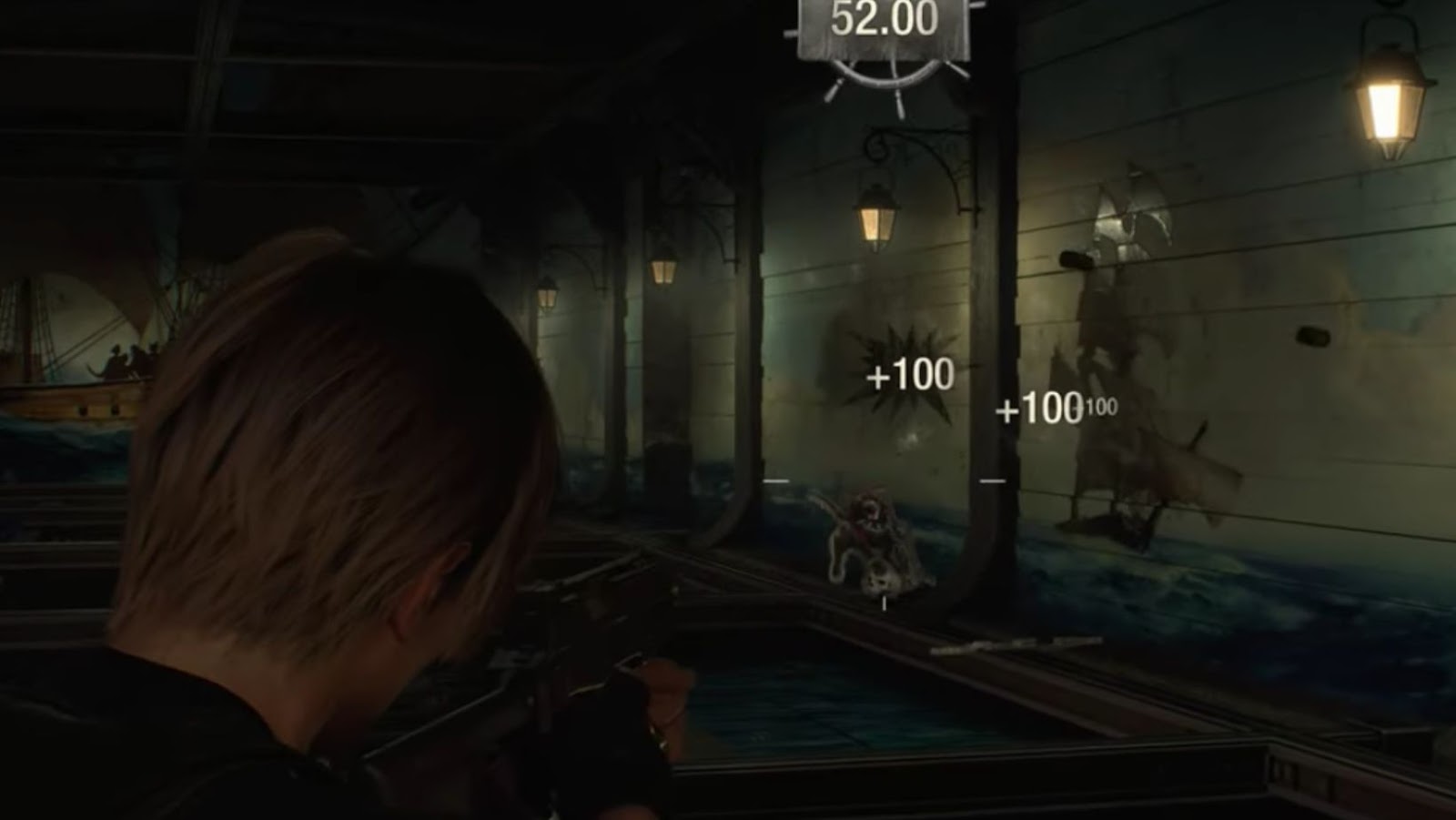Resident Evil 4 Basics
Resident Evil 4 is a survival horror game with unique and challenging gameplay mechanics. Players must learn to adapt to various situations. Inventory management, exploration, boss fights, combat and puzzles are the basics of this game. Five acts are split into 20 chapters, each with its own objectives and settings. This makes for around 20 hours of gameplay.
An adaptive difficulty system adjusts the game’s challenge based on the player’s performance. This makes it a great experience for both new and experienced players. It has sold over 10 million copies since its release in 2005. Capcom ported it to many platforms such as PC, PlayStation 2/3/4/5, Xbox/Xbox One/Xbox Series X/S and Nintendo Switch.
So, let’s get ready to dive into the storyline breakdown and try to make sense of Umbrella’s twisted plot – if we can stay alive long enough!
How Many Chapters Does Resident Evil 4 Have
To understand the Resident Evil 4 storyline, dive into this comprehensive guide with a breakdown of the storyline chapters. You will explore the different parts of the game’s storyline, including the eerie village of Chapter 1, the imposing Castle of Chapter 2, the mysterious Island of Chapter 3, and the foreboding Laboratory in Chapter 4.
Chapter 1 – Village
The first chapter’s set in a small settlement, showing the tranquil life of its people. It introduces the protagonist and his lifestyle, soon to be disrupted by unforeseen events. This isolated village has no contact with the outside world ’cause of its secluded location.
The village is peaceful but uneventful, emphasizing family bonds and communal activities that run their life. Yearly harvest festivals and ancestral traditions keep them rooted. The visuals of the village are quaint and idyllic – a strong contrast to what’s to come.
It’s interesting that this fictional story reflects a larger pattern of behavior in certain communities around the world. It goes back to ancient times when people lived close-knit lives, inside walls or settlements for safety. Time to storm the castle and check if the walls are as thick as the plot!
Chapter 2 – Castle
The second chapter takes place in a grand, fortified structure. It’s like a gothic castle from medieval times, with winding passages and chambers. Here, our protagonist faces hidden traps and tunnels, and encounters mysterious figures. It’s all very suspenseful, drawing readers in.
For even more immersion, I suggest maps and artwork inspired by the story. These can help deepen the connection to it.
Chapter 3 – Island
The third chapter of the tale is set on an island. Here, our characters must face unforeseen tests of their survival skills. The mishap has caused a commotion and the story’s style turns intense. Readers are able to feel every emotion as the setting and characters grow in tension.
It appears that future chapters will be even more complex. This Island chapter is a great turning point: it sets the pace for what’s ahead. Symbols and metaphors should not go unnoticed – they may contain clues for upcoming events!
Be prepared for Chapter 4: Laboratory! There, our protagonist will encounter questionable science experiments and safety regulations.
Chapter 4 – Laboratory
The fourth chapter of the story takes place in a scientific testing facility. It sets the stage for groundbreaking discoveries and dramatic revelations. Here’s what you can expect:
| Chapter 4 – Laboratory |
| —————————————————- |
| Synopsis |
| Scientific testing. |
| Secret agendas. |
| Compelling character development. |
You’ll witness scientific processes with characters driven by ulterior motives. The plot progresses with real stakes. Don’t wait to see how this story unfolds. Flutter away from danger and find out what happens next.
Get ready to button mash your way through this section. Gameplay elements are like a video game’s bread and butter.
Gameplay Elements
To master the gameplay elements in Resident Evil 4, understanding its inventory management, combat system, and resource management is key. You need to know how to properly manage your inventory, use the combat system effectively and balance your resource management. Each sub-section offers different insights into how to excel in gameplay.
Inventory Management
Managing Owned Items – Item management is the practice of keeping track of and organizing items owned by an individual or a group for use in a game. Four different inventory management systems are used in video games. Each has its own characteristics and advantages.
Grid-based: This treats inventory as a box with slots for items. Optimization is key due to limited space. Advantages include Capacity Management and Item Sorting.
Weight-based: This assigns weights to items, limiting capacity. Strategic decisions about items carried are encouraged. Benefits include Realism and Strategic Thinking.
Unlimited Stash: No limit on storage capacity. Can be accessed remotely or through in-game stations. Convenience and Safekeeping are advantages.
Despawn Timer: Items disappear after a certain duration if left unattended. This discourages hoarding and emphasizes time sensitivity.
Players can combine strategies to suit their gameplay approach. Benefits include faster progression, effective resource utilization, and greater rewards.
Polygon’s report “How Assassin’s Creed Odyssey lets you choose your hero” states that proper inventory management is essential for mission success in games like Assassin’s Creed Odyssey. So get ready to battle, as this system will decide if you’re a champ or a chump!
Combat System
The Skirmish Mechanism is a critical part of the game’s interactive gameplay. It allows for combative gameplay between different characters. Each character has various battle strategies assigned to them, based on their type, weapons, armor, and upgrades.
This system helps players immerse themselves in the game. Here’s a table of combat-related attributes:
| Attribute | Description |
| Health | Shows how much damage a player can take before dying |
| Armour | Reduces incoming damage during attacks |
| Stamina | Determines actions like sprinting & blocking |
| Attack Power | Decides how much damage a player can do during attacks |
The game’s story ties directly into combat gameplay mechanics. Circumstances such as terrain, weather, and surroundings all affect the fight.
Pro Tip: Before a fight, always evaluate the situation for weaknesses and strengths. You can even use your opponents as walking loot boxes!
Resource Management
Asset Optimization is needed to succeed in a game. This includes managing resources like health, ammo and currency.
Resource management is key in many games. Players must choose between needs and wants.
| Game | Resources | Objective |
| Call of Duty | Ammo, Health, Currency | Survive and buy |
| Civilization VI | Gold, Production, Food | Construct cities and fight wars |
| Clash of Clans | Gold, Elixir, Dark Elixir | Upgrade buildings/troops |
Managing resources can also be used for strategic purposes. Like denying opponents or keeping them occupied. When strategizing, think of difficulty level and available time. Strategies like saving for emergencies or long-term goals help. Prioritizing objectives give more efficiency. By optimizing resource skills, players increase their chances of success. And achieve more in the game. Plus, you get to face off against giant, menacing bosses!
Boss Fights
Resident Evil 4 is an action-packed, horror-filled game! It’s full of challenging boss fights. You’ll need planning, skills and reflexes to beat these powerful enemies. Here’s 5 things to remember:
- Study the enemy’s weak spots.
- Use your environment for help.
- Stay alert for attacks.
- Manage your items carefully.
- Patience will be rewarded.
Be prepared – there are hidden bosses with even tougher challenges. Recover from each fight by getting health supplies and upgradable equipment. Successful battles bring rewards like valuable drops and weapons.
Don’t miss out on these epic battles! Take them on with courage and strategy. Explore Resident Evil 4 to find hidden secrets – blood, guts and zombie moans included!
Hidden Secrets And Easter Eggs
Resident Evil 4 is full of hidden surprises! Here are six secret elements you won’t want to miss:
- One villager looks like Frankenstein’s monster from Mary Shelley’s novel.
- There’s an anti-Zombie device shaped like a Nintendo Gamecube.
- The Merchant is voiced by Paul Mercier, who also voiced Leon in the English version.
- Chief Bitores Mendez’ floor covering is puzzle pieces from past games.
- Plagas can be found inside bugs like snakes, spiders, and enemies’ shoulders.
- Break fifteen blue medallions to get the Punisher handgun.
If you explore, you’ll find even more secrets! Multiple difficulty levels reveal new surprises. Look for cutscenes for hints on future events and tasks. To unlock all the features, you’ll have to survive a zombie apocalypse – in high heels!
Unlockable Features
Resident Evil 4 stands out as one of the greatest games in the series. There are lots of Unlockable Features to make your battle with Los Illuminados easier. From extra modes to special weapons, here they are:
- Separate Ways mode gives you Ada Wong’s view.
- Ashley’s Knight Armor gives her more protection.
- The Mercenaries mode has a leaderboard for top scores online.
- The Infinite Rocket Launcher has infinite ammo and mega firepower.
- New Game Plus means you get unlocked weapons from your last game.
- The Handcannon is a .50 caliber weapon for one-shot kills.
Getting these features involves completing tasks. Like, beating the game in a certain time or playing certain modes multiple times. All this makes the already great game content even better.
Pro Tip: Read the Raccoon City Police Department notes to get codes and hints that will help you unlock features. Whether you’re an experienced Resident Evil fan or a newbie, this guide will make you feel like you’re in the game – minus the zombie attacks, of course.
Conclusion
Resident Evil 4 has twenty chapters, split into four parts. Every chapter has its own atmosphere, enemies, and boss fights. Leon S. Kennedy needs to save the President’s daughter from being converted into a bioweapon.
Plus, there are extra mini-games and modes like Assignment Ada, Separate Ways, Mercenaries mode, and more. These offer players additional gameplay.
If you want to get the most out of the game, take your time with each chapter. Dig into the different locations and collect useful items that can help you survive.
Be warned – the boss fights are intense! Focus and check your inventory for items that can help you beat them.



